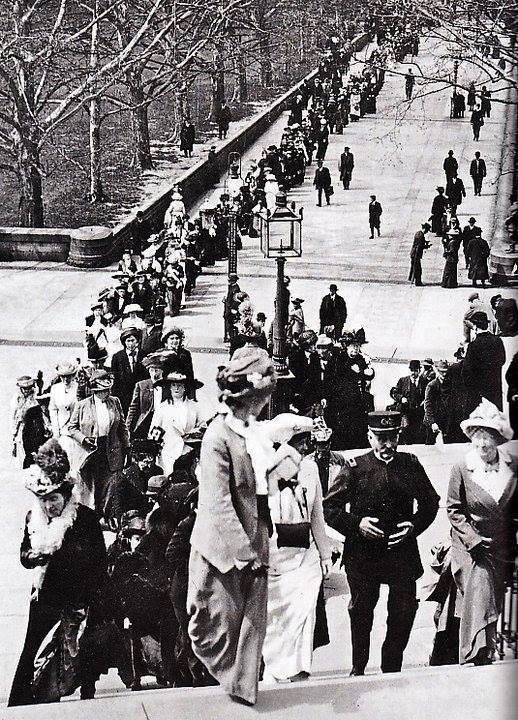April 7, 1913: Just five weeks after overcoming the riotous conditions that beset their parade and pageant on March 3rd, suffragists from around the country were back in Washington, D.C., today, for another impressive event demanding a Constitutional amendment banning sex discrimination in regard to voting rights.

Though this event was less than one-tenth the size of the previous one, and consisted of only 531 “Votes for Women” advocates, that number was appropriate to the event’s purpose, since each of the 48 States has two Senators, for a total of 96, and there are 435 Representatives in the House.
It was the largest delegation of suffragists ever to call on the 531-member Congress.
After being given a welcoming speech on the Capitol steps by a U.S. Senator, the marchers entered the Capitol, where they were greeted by Representative James W. Bryan of the Progressive (“Bull Moose”) Party, elected to represent an At-Large District in Washington State. Bryan said that “there were enough men in the Senate and House to make certain that the flag of woman suffrage never would be pulled down in the United States.”
The delegates then filed into the Rotunda, where nine Senators and an equal number of Representatives from the nine States where women already have equal voting rights with men received them. Those members of Congress shook hands with each of the women as they dropped their petitions into a box specially prepared for the occasion, putting one petition in the box for each Senator and Representative. The women then went to the Senate and House galleries, where they could see the suffrage amendment resolutions introduced on the floor by Senator George Chamberlain, Democrat of Oregon, and Representative Frank Mondell, Republican of Wyoming.
Today’s events began with a large meeting in the Columbia Theater, in which rousing speeches were made by well-known suffragists such as Alice Paul, Harriet Burton Laidlaw, Beatrice Forbes-Robertson Hale, and Janet Richards. Those present for the event, which was organized by Alice Paul and her National American Woman Suffrage Association Congressional Committee, then took to the streets. Led by two marching bands, there was no trouble this time as they made their way from the theater to the Capitol accompanied by adequate police protection, something totally lacking 35 days ago.





